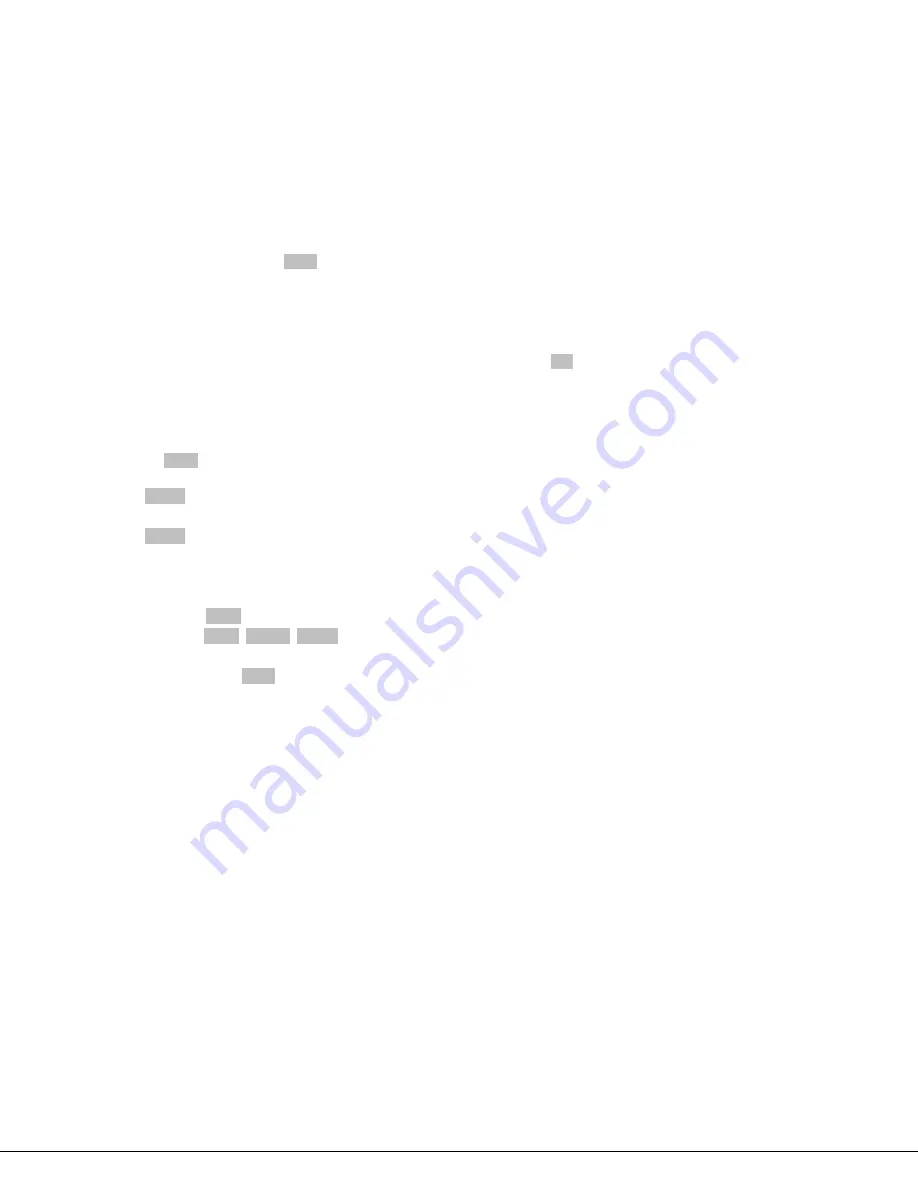
DeltaSphere-3000 3D Scene Digitizer
5
9/23/05
V
Color Alignment with SceneVision-3D
You have a range file and associated color photos acquired with the calibrated camera. SceneVision is running with the scene
loaded. Make the window large.
Note: You can only align color to an aligned range file. Do range alignment first. (Work-around below.)
1.
Open the range file by double-clicking. Next choose
Save File As
in the File menu and give it a new name with the word ‘color’ in it. e.g. if
the file is kitchenref.rtpi we recommend kitchenref_color.rtpi. This creates a copy of the range file.
2.
Take a look at the photos for the range file you want to color to decide which you want to use.
o
Use Windows Explorer and look at them as thumbnails, or open up a few of them in SceneVision-3D by double-clicking on
their names in the scene tree. The number in the name is the photo’s azimuth heading.
3.
Select the
Color Align
tab.
Select 1:New
. Choose the range file you want to color (the file created in step 1).
4.
Choose the photo you want to align. ( It doesn’t matter where in the scan you begin.) Windows for both files will open.
5.
Go the Window menu and choose
Tile Vertically
. (Not required, but makes it easier to work.)
6.
Your goal is to select 5 to 8 (or more) pairs of correspondence points. The
Create Correspondence Point
button is already selected.
o
Zoom out to identify locations where you can find correspondence points. Zoom in to make the selection.
o
Select a point in one window (it doesn’t matter which one) by holding
Ctrl
and picking with the mouse. Then select the
corresponding point in the other window. Select with precision.
o
Repeat 5 to 8 times.
Note: Choose points well. The program uses your points and does not improve on them as in range alignment.
Note: Spread the points out around all parts of the image as much as possible. This is important!
7.
Select the
2:Calc
button. It will calculate the alignment. Errors below 4 pixels are very good and below 8 are desirable. Often errors above this
are acceptable.
8.
Select
3:Apply
. The photo is now aligned (though not yet added to the range file.)
o
Look at the pairs of points. .If they are not near each other, you can try moving them, then steps 7 and 8 again.
9.
Select
4:Color
. Look at the resulting color file – especially at edges near the edge of the image to see if they are aligned well.
10.
If they are, hit the save button and, when asked whether to save the file, say yes.
11.
If you are not satisfied with the alignment, do the following:
o
Add or move points in the areas where there are misalignments
o
Select
Revert
. The range file reverts to the last saved version – removing the most recent photo added.
o
Then 2:Calc, 3:Apply, 4:Color.
o
If satisfied, save. If not, repeat these 3 bullets. Then save.
12.
For the next photo, select
1:New
. Choose the same color range file and a new photo – usually one adjacent to the one just aligned. Repeat
from step 5. A 360
°
scan usually requires 9 high and 9 low photos.
Tactical Tips
•
If you need to move a point once created, select the arrow cursor, hold Ctrl, and drag the point to a new location or move it with the
arrow keys. You then need to reselect the
Create Correspondence Point
button to go back to picking.
•
Pick your photos consistently (e.g. all dk or all lt) so the color matches throughout. Maybe compare to other scans.
•
If you want to color a range file that hasn’t been aligned – perhaps you’re coloring and someone else is doing the range alignment –
there is a solution
o
Create a new, temporary scene. Insert the directory with the scan you want to color and all its photos.
o
Because there is only 1 range file, it is considered ‘aligned’ and you can color it as above.
o
When done, the resulting *_color.rtpi file can be inserted into the original scene. If the original range file has been aligned,
you can ‘share alignment’ of this new file with the original range file – or you can align it.
•
If there is a part of the photograph you wish to ‘mask out’ – because you have better color from another photo, read the manual on
‘masking’ in the color alignment chapter.
•
If you are not going to use part of a scan in your model, perhaps because you have better data from another scan, then you do not
need to color that part of the scan. The uncolored part can be edited out in model building or model editing.









